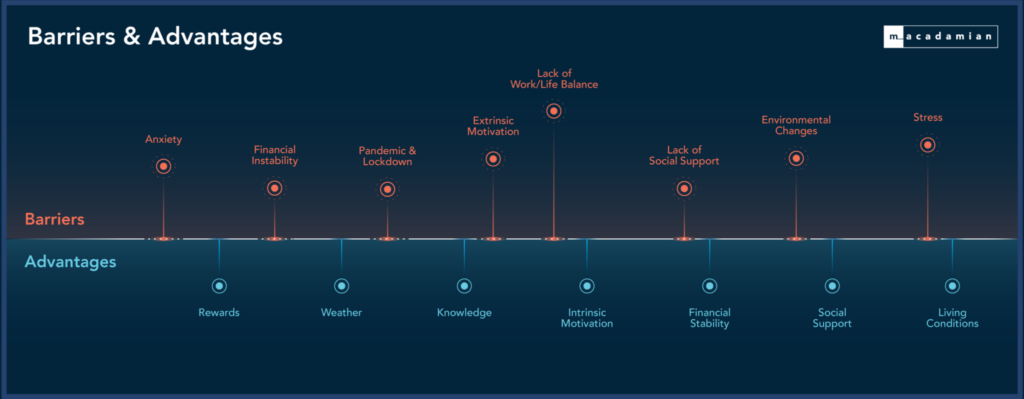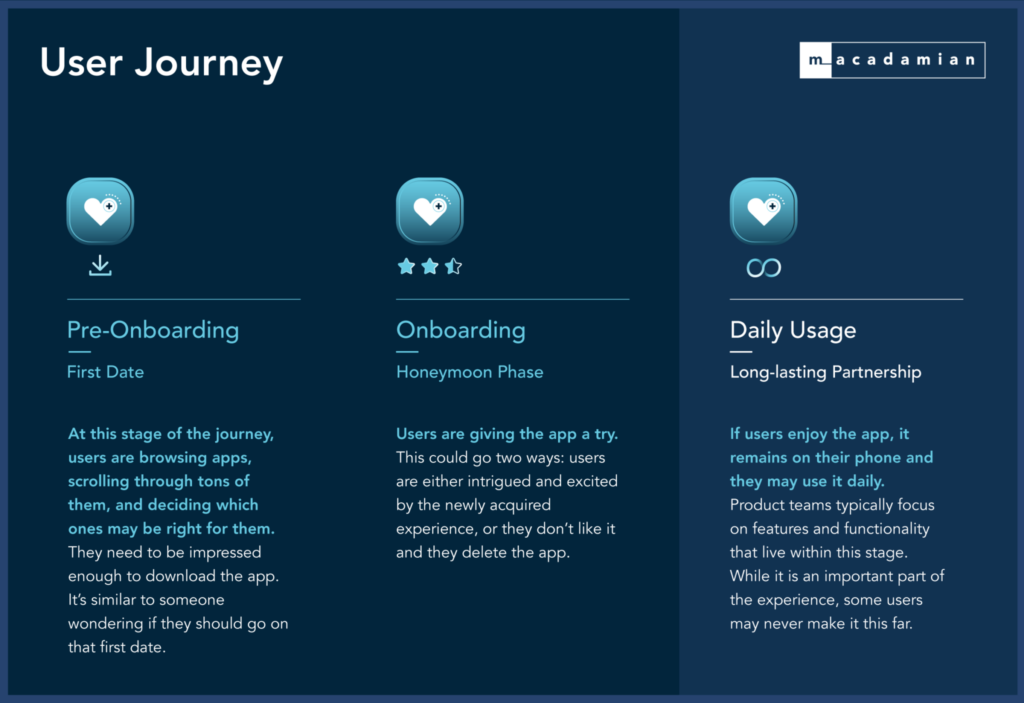Apr 8, 2021 | 9 Min Read
The global mobile medical app market is exploding. It was worth $4.2 billion in 2020. In 2027, that number is expected to reach $20.7 billion. Even with all that growth, many digital health apps aren’t effective at creating positive health outcomes in the lives of people. Here’s why.
The digital health industry is booming, but many digital health apps can’t seem to retain users.
Although the industry continues to grow, many of the products out there aren’t creating positive health changes in the lives of people.
The global mobile medical apps market is projected to reach $20.7 billion by 2027, in part thanks to the COVID-19 pandemic digitalizing the healthcare landscape. In 2020, it was worth $4.2 billion.
Nevertheless, when you look at data on medication adherence — just one example of a prominent issue some health apps try to address — 40% to 50% of the individuals living with chronic diseases don’t take their medication as prescribed.
Despite the technology advancing and investment increasing, this medication adherence figure hasn’t really changed since the early 2000s, as reported by the World Health Organization.
It makes you wonder.
With the increased investment over the years, why are so many of these digital health apps ineffective at creating real change in health outcomes?
1. App Or No App, Forming Or Changing A Habit Is Hard
Digital health apps can assist us in forming new habits, improving existing ones, or more often than not, help us get rid of bad habits to replace them with good ones. Any form of behavior change is hard.
The reality is that life gets in the way.
We can’t look at habit formation in isolation. There are so many moving parts in our daily lives; some help us create better habits (take a look at the advantages below) whereas others stop us in our tracks or at least make the task so much harder (take a look at the barriers below).

“The journey to habit formation is paved with good intentions, but twice as many barriers,” says Cognitive Scientist, Roxana-Maria Barbu, PhD.
The pandemic is one external factor that seems obvious in impacting our habit formation, but there are so many more factors around us, and they’re constantly changing.
More often than not, users rely on apps to build better habits within an unrealistic time frame, the most popular belief being 21 days.
The reality is that the time it may take for a person to form a habit is highly personal. According to Lally and colleagues (2010), the number of days to change your habits can range from 18 to 254 depending on many factors, such as barriers (anxiety, financial instability, pandemic and lockdown, lack of social support, to name a few), as well as on the intricate relationship between the user, their environment, and the application.
2. Users Go Through Journeys, So Do Apps
When trying to understand users’ needs and pain points, product teams don’t necessarily think about the user using the app as a journey in itself. Answering the following questions, however, can help inform design decisions: What is it like for an individual to experience the app over time, from discovery to having accomplished their goal? Does the app adapt or shift with the user’s experience?
We recommend starting off by breaking that journey down into three main stages. Think of it as a relationship between two people.

Pre-Onboarding (First Date)
At this stage of the journey, users are browsing apps, scrolling through tons of them, and deciding which ones may be the right for them. They need to be impressed enough to download the app. It’s similar to someone wondering if they should go on that first date.
Onboarding (Honeymoon Phase)
Users are giving the app a try. This could go two ways: users are either intrigued and excited by the newly acquired experience, or they don’t like it and they delete the app.
Daily Usage (Long-lasting Partnership)
If users enjoy the app, it remains on their phone and they may use it daily.
Product teams typically focus on features and functionality that live within this stage. While it is an important part of the experience, some users may never make it this far.
3. Teams Copy And Paste Design Techniques Without Considering Context
Often, product designers apply techniques exactly how they are used in other industries, without accounting for the unique complexities that come with users who are facing challenging health conditions.
For example, loss avoidance is a gamification technique that creates urgency through possible losses unless users act immediately.
But that wouldn’t work for a person living with a medical condition. This person might not be able to log their medication or their symptoms because they’re experiencing a migraine, or they simply cannot use the app within a given timeframe.
In such contexts, it is important to identify the proper engagement mechanisms that will ensure user retention, as opposed to causing discouragement or distress.
4. There Is A Lack Of Techniques Used In Clinical Settings
Behavior change is complex; behavior change in the context of a medical condition is even more challenging.
Complex problems require complex solutions. Complex solutions require an interdisciplinary team. For a comprehensive solution, product designers should complement their expertise with knowledge and techniques rooted in disciplines such as:
- Behavior change science;
- Cognitive neuroscience;
- Psychology;
- Gamification.
They should also complement their expertise with knowledge from experts such as:
- Individuals living with a condition throughout the symptomatology journey;
- The user’s extended support network such as family and caregivers;
- Practitioners and experts who know about the respective medical condition.
Apps striving for successful clinical outcomes should, firstly, understand and apply interdisciplinary knowledge, and secondly, consider the user, as well as their extended network and environment.
5. Assess How Well Your App Supports Changing User Behaviors
It’s important to evaluate how well an app assists users in changing their behaviors to achieve certain health outcomes. This is necessary for the app’s continuous improvement and to help with user retention.
If you’d like to understand how your application design could be enhanced or improved to increase adoption and retention rates, and overall user satisfaction, reach out to connect with our experts.

